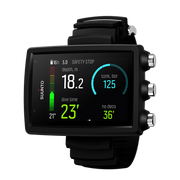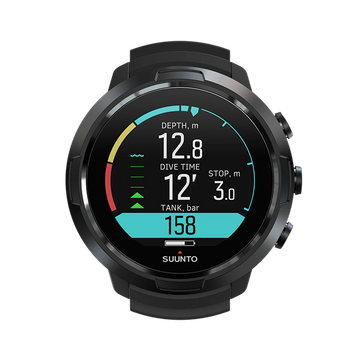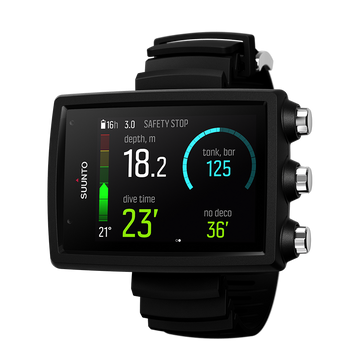

Suunto Blog

Recover like a pro
What is the best way to recover after a race, adventure or just a hard effort on your own? We asked our ambassadors how they do it. From eating pancakes to paragliding, from secret smoothie recipes to stretching, their answers will help you get back on form more quickly.
KILIAN JORNET Stay fresh by doing other sports I like to do some mountaineering activities to feel different feelings than just running. I ran less than 200 km in the build up to Hardrock because I was climbing instead. I was keeping myself fit through mountaineering so when I came to the race I was mentally fresh and physically prepared.
Kilian stretches ©jordo canamerasAvoid over-trainingIf you focus too hard on one thing for too long you can get tired of it. You see people who are doing a lot of long races and who keep this up for one or two years and then, boom, they’re down and injured. It’s important to never do too many long races every year because after one, two or three years it can be really hard to recover. For me, 200 or 300 miles a year is the limit.
Kilian Jornet is a multiple record breaking trail runner, endurance athlete and world champion ski mountaineer.
EMELIE FORSBERG Rest! Normally I rest the day after or if it is an ultra at least. If I do a 2-4 hour race I normally go for a small run just to get the circulation going. I also like to treat myself after a race, like foot bath, compex [electrostimulation] take time for yoga, things that are easy and good for the body. Then my mind feels recovered and is soon ready for another hard training week or racing. I think the mind is very important for recovering.
Emelie likes to practise yoga and eat pancakes. ©Emelie Forsberg
Eat pancakesAfter an ultra, where you empty your body quite a lot and also eat chocolate or gels, I like to eat fresh and healthy, at least the first and second day. But pancakes is a standard the morning after, and yes I think pancakes can be pretty healthy..! Specially if I make banana pancakes :)
Emelie Forsberg is a European and world Skyrunning champion
CONRAD STOLTZ
Forget ice baths I don’t go in for compression or ice baths. I used to jump in a cold rivers after training but I'm over it! Compression socks don’t fit well and science hasn’t really proven that ice baths work.
Old school fan: Conrad Stoltz doesn't go in for ice baths or compression. ©zooom.at/markus berger
Refuel properlyBut there are things that are proven to make a difference, fueling and rehydrating properly. Within the first half an hour of training you need to have so many grams of carbs and so much protein to start the recovery. [Advice varies but many sports nutritionists recommend following the for 3:1 carbs to protein ratio.]
Conrad Stoltz is a four-time XTERRA World Champion triathlete
ÅSA LUNDSTRÖM
Easy rideGo on a very easy bike ride. It helps the circulation going and speeds up the recovery. If the weather is bad or biking is too much trouble (mentally), I sometimes go for an easy walk or stroll.
© Åsa LundströmMassage In big blocks of training, a massage every now and then is very good for recovery, muscle relaxation and preventing injury. It can also be considered a treat for your body after some hard work and helping you relax. I get the massage after a big day of training, as the thing of the day.
UELI STECK
ElectrostimulationI use compex electrostimulstion and try to stretch a lot. Rest days are also good. I just had a rest day so I ran easy the vertical km up to Brevant in Chamonix. I had a drink with a friend then went paragliding.
Ueli Steck during his mission to climb all 82, 4000 m mountains. ©PatitucciPhotoWarm down after exercise I move between 7 and 14 h per day. You start easy the first 30 min and you end the same way. So you have your warm-up and cool down. If possible I try to get my feet in a cold stream.
MATTHIAS SCHERER
Respect your body I really have to say that in the adventure world at the moment recovery and nutrition is not taken seriously. People are strange about hydration. They wear a Suunto Ambit, have the best equipment and then they drink snow water and don’t take things like this seriously! Take electrolyte capsules with minerals to rehydrate properly.
Matthias front lifting weights. ©Tanja SchmittAvoid processed foodsTry to go as long as you can on normal food and then you can start to eat energy bars etc. People push the limits of eating concentrated food which can cause stomach problems. Eat a peanut butter sandwich.
Bring it down slowlyFor recovery it’s important not to stop right away after an ice climbing season. I used to become ill in April when I stopped. Now I continue with skiing and in June and July I keep going to the mountains. I've found cycling helps me to mentally digest everything I've done over the winter. In a week I try to do at least 20 hours on the bike. I work on my films. That's my way of recovery.
Matthias Scherer is a professional ice climber
GREG HILL
Smooth operatorAs a ritual I always have a smoothie after my sporting activities. As quick as I can I am at my blender mixing in my ingredients. Bananas, blueberries, protein mix, raw cacao, milk. That is the base for the majority of my shakes, each food is strong in its own way, combining for a strength building, body recovery, tasty beverage.
Greg making a smoothie at home ©zooom.at/Markus Berger Cross TrainingAnother bit about an ageing body is balance. If over the course of your life you have created imbalances, they become more problematic in later years. To counter act I have been going to the gym to create an overall body fitness not just one designed for peddling a bike or skinning up mountains. Back problems, IT-band issues, all come from unbalance, so cross training is key.
Take some time outAlso to truly have days off. Not partial days off. But couch surfing, suntanning, doing nothing days. You can get away with just one but at least every two weeks to take 2-3 days completely off. This truly helps my body as well as my mind. I come back and feel so much better than if I had pushed through on that extra day of exercise.
Greg Hill is a pro skier. In March 2014 he skied 100,000m in a month
WILLIAM TRUBRIDGE Sleep and eat right “Recovery is as equally important as training. In freediving when you hold your breath it generates a huge amount of carbon dioxide which makes your body very acidic and means all those free radicals cruising around doing damage. Being able to target that with diet that's very rich in antioxidants and making sure you're sleeping right is important.” Drink this:
Will Trubridge's recovery smoothie
My go-to recovery drink after deep training is a green smoothie, with the following ingredients:1 frozen banana (makes the smoothie cold and creamy)1 cup almond milk + water added to get the right consistency2 tbsp Manitoba hemp protein (the best vegetal protein source)1 tbsp cacao powder (great antioxidant qualities)1 tbsp Hawaiian spirulina (nature's multivitamin, with many other superfood ingredients like chlorophyll, omega 3,6,9 fatty acids and more)1 tsp beetroot extract powder (great for blood-building)Everything is blended together, and topped with a dusting of granulated bee pollen.
Will Trubridge is a multiple record breaking freediver
Still need tips on how to recover? Well go explore the recovery options available with the Ambit3
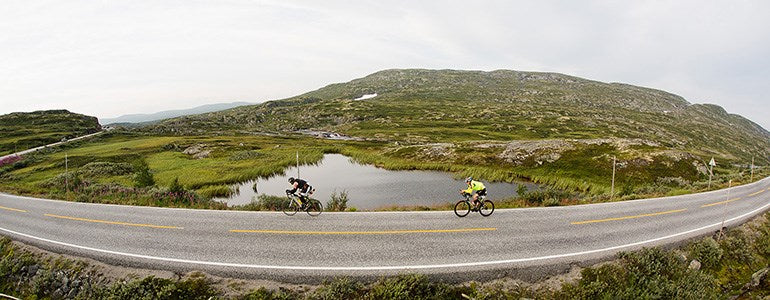
Meet the Norseman!
This weekend sees one of the world’s toughest triathlons take place, the Isklar Norseman. It’s a unique unsupported triathlon featuring a 3.8km swim in the frigid waters of the Hardangerfjord, a 180km bike ride, and is followed by a full marathon with a sting in the tail – an ascent of 1,800 m Gaustatoppen. The total ascent is 5,000 meters. Entrants are warned that they may get ‘unusually emotional’. On the start line will be pro-triathlete and elite Ironman athlete Teemu Lemmettylä. And he’s going out to win. One day before the race, he gives us the race lowdown.
The Norseman proves too much for one competitor. ©agurtxane concellon
Why do it?
The history and the fame of the race… it’s the most challenging xtri competition!
Physically, how much more challenging is it than a regular Ironman? It’s hard to say because Ironman is always an all-out effort. Pushing too hard at the beginning is much more costly in this type of race. I expect that the bigger difference compared will be on the mental side. You have to keep your head together.
The marathon ends with a brutal ascent of Gaustatoppen. ©Jóse luis hourcade
How have you had to prepare differently? On cycling I have had to spent more time in up-hills during the training camps and generally put more focus on cycling because the bike leg is challenging and takes a long time. I have been working on my uphill running and used much more trails. However running hours have been similar to previous years.
Teemu Lemmettylä is an elite Ironman athlete. ©Teemu Lemmettylä
Are you concerned about conditions? Weather can range from beautifully sunny to blizzard? Training in Finland contains enough cold and bad weather which should not be a problem!
Do you think you can win? Anything is possible. On regular triathlon I should be the best from the pack. But this is my first Norseman – it’s just impossible to say for sure.
The race begins with an early start – and a cold one! ©Dag Oliver
Main header image: ©Jóse luis hourcade

ORIENTATE YOURSELF WITH A COMPASS
Using a map and compass may seem antiquated but it could save your life. So when traveling in the backcountry it is always a good idea to carry a map and a compass with you even if you have a GPS device. But they are only good if you know how to use them!
1. ORIENTATE YOURSELF
With map-reading the most important thing is to orientate yourself on the map and then to always keep track of where you are on the map. Use the features on the map to find your location. Look at the big features first, like peaks, lakes, roads and then look at the smaller details such as buildings, footpaths or small rivers etc.
Use the altimeter function to help pinpoint your location. Once you know your height you can use the contour lines to fix where you are more precisely. Spend some time making sure the features on the ground match those on the map. It’s very easy to convince yourself otherwise! Top tip: it can take a long time to orientate yourself. So once you’ve done it, fold the map in such a way that your location is visible. To be even more efficient, do what orienteering racers do: carry the map with your thumb on your position.
2. ORIENTATING THE MAP
To be able to read a map, you must first orient it. Turn your map into a position in which the details on the map correspond with the landscape in front of you. The orientation of a map is the key to reconciling the map with the terrain.
To orientate the map, place the compass on the map and rotate the map to align the magnetic compass needle with the northerly grid lines on the map, making sure the red end of the needle points to north on the map.
Also read: Tutorial Tuesday: Where am I? Determining your location with an Ambit.
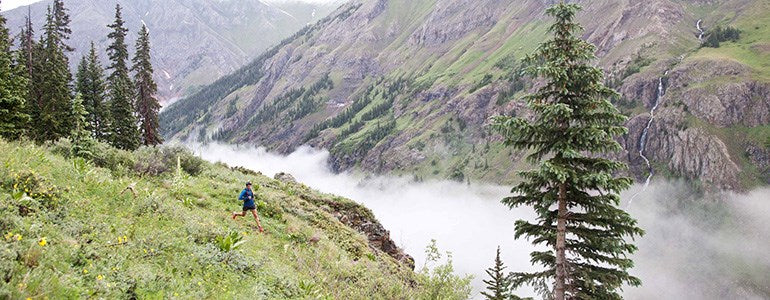
Go mountaineering to stay fresh, says Kilian
With two big victories this summer, trail running legend Kilian Jornet is planning different mountain adventures to mix it up and stay fresh.
Breaking records is what Kilian Jornet has done over and over again. Aside from setting speed records on giant mountains all over the world, the 27-year-old Spaniard has busted a number of ultra marathon race records. In June, he won the iconic Mount Marathon Race in Alaska, breaking the men’s course record in the process.
Then, only a couple of weeks later, he won the tough Hardrock 100 Race, breaking the counter clockwise record after winning and breaking the clockwise course record just the previous year. “I have been racing for 15 years and I have been doing a lot of races and what attracts me to a race now is not only that the level of competition is high, but that everything else around it is nice too,” Kilian says. “Both the Mount Marathon Race and Hardrock 100 races have amazing trail and incredible ambience.”
The Hardock 100. Photo from file ©Blake Wood.
Rather than more racing this summer, if the weather stays good Kilian aims to carry out two mountaineering projects in the European Alps. Mountaineering is one of the key ways Kilian likes to recovery after big tough running races and stay mentally fresh, which is something he says is crucial for all athletes. Click here to find out about new recovery features for Ambit3 watches. “To help me recover mentally from racing, I like to do some mountaineering activities to feel different feelings than just running,” he says. “I ran less than 200 km in the build up to Hardrock because I was climbing instead.
Midnightsun Ersfjordtraversen
Ersfjord traversen is one of the most beautiful ridges crossings I have ever done. A scrambling, climbing and some glaciers crossing on the side of the fjords.Enjoy the video!!#Alpinrunning #Expandyourplayground
Posted by Kilian Jornet on Monday, 20 July 2015
“I was keeping myself good through mountaineering so when I came to the race I was mentally fresh and physically prepared. If you focus too hard on one thing for too long you can get tired of it.“You see people who are doing a lot of long races and who keep this up for one or two years and then, boom, they’re down, injured and no longer reach a good level. It’s important to never do too many long races every year because after one, two or three years it can be really hard to recover. I think 200 or 300 miles a year is the limit.”
Main image shared via Kilian Jornet

SIX USEFUL TIPS FOR SWIM-RUNNING
Swim run events are great endurance challenges – and a super fun way to enjoy a summer’s day. The number one event in the world is the Ötillö Swim Run World Championship in Stockholm’s archipelago in September. In Ötillö, teams of two will open-water swim and trail run a distance of 75 km across 26 islands.
To make the challenge even bigger, the competitors have to carry everything they need with them through out the race, which results in some interesting and novel gear solutions – they swim with their running shoes and run in wetsuits.
German Armin Hummel and Finn Juha Lindfors are preparing for their third attempt at one of the toughest endurance challenges in the world.
Here Armin and Juha share six useful tips to get you through your swim-run more smoothly. Enjoy!
Less is more
“Focus on what is really needed. In Ötillö, there are plenty of feed stations along the way – though sometimes it can be a lengthy break between them. Make sure you take enough drinks and food at the feed stations. It will be a looong day!”
“You can take some fuel with you if you can carry it, but at least for us there is no need for a hydration pack. A soft flask might be a good idea as it can be stuffed inside your wetsuit once empty. If you need to worry about a backpack you probably aren’t focusing on the race.”
Practice the transitions
“Train switching from running to swimming, and the other way round. There are many transitions and if you spend an extra minute at each, you end up losing a whole hour. Quick transitions are also a key reason to minimize equipment.”
Choose the right shoes
“Your swim-run shoes and socks should be fast drying and comfortable also when they are wet. Good grip on slippery, wet rocks is essential.”
“We have tried regular running shoes, trail running shoes and trail running shoes with spikes. Shoes without spikes seem to work better for us on the rocks. So this year both of us will be using trail running shoes without spikes.”
Don’t swim any extra distance
“Make sure you always look for the point where you will get out of water. Sometimes currents can be strong and, if you don´t look frequently, you can be off-course quite fast. Frequent position checks are important, especially on the long swims.”
“As it is a pair sport, it might also be enough that one navigates and the other one follows. Consider this especially, if one in your team is clearly a stronger swimmer.”
Consider using paddles and pull buoys
“The first time we raced Ötillö we used pull buoys to improve buoyancy, but last year we didn’t. We are still experimenting on this. We are not sure if there is a benefit for us. “
“Generally you need to be a really strong swimmer to swim without pull buoys, as shoes are on all the time. Well, some do actually take their shoes off at least for the longer swims.”
“Paddles give you extra force especially when there are waves and currents. However make sure you train with them before so your shoulders are used to the extra stress.”
Always move, never stop
“In Ötillö, there is lots of running. Try to maintain a steady pace rather than going superfast in the beginning and then not making it in the end. If you start walking, it is hard to get back to running again.”
“Make also sure that you don´t go off-track and follow the markers. We use our Suunto Ambit3’s to know the distances during stages.”
All photos by ÖTILLÖ14

Six runners win Suunto Ambit3 Run watches
After a huge response on Instagram and great feedback from professional running coaches Koop and Nick, the How do I run? contest has closed and six lucky runners have each won a Suunto Ambit3 Run watch.
Dozens of people shared clips of themselves running on Instagram to take part in our How do I run? contest. Carmichael Training System coaches Koop and Nick were run off their feet trying to analyze as many clips as possible.
Click here to read Koop and Nick’s 8 tips to become a better runner
© Droz Photo/Rosso Damien
The feedback from the coaches wasn’t only critical, much was positive. Many runners showed great overall form and need to work on one or two small points to improve their technique and performance. Check out the Instagram clips below for a taste of the action.
All of the runners who had their running analyzed by Koop and Nick went into a draw to win one of six Suunto Ambit3 Run watches. Instagrammers @stephenskinner6, @mbhuyko, @mish_glover, @faisnaini, @renatacavalleiro and @gofknxplore have each won a watch! Congratulations!
To also help runners improve their running performance, Suunto has released a new running performance level to its Ambit watches. The new feature is a combined measurement of physical fitness and running efficiency that guides training both during a single exercise and in the long run.
Click here to learn how to use Ambit3’s new running performance feature
Feedback from the coaches
More than a chance to win an excelent equipment, a chance to hear from the experts about how is my running! Love Suunto #SuuntoRun #skechersperformance #corracomonunca
A video posted by Renata Cavalleiro (@renatacavalleiro) on Jul 10, 2015 at 7:14pm PDT
Coach Nick says: You have a really nice forward lean when you're running. Definitely try to maintain that. Like a lot of runners, you are landing slightly on your heels and your feet are contacting the ground out in front of your body. If you can try to put your feet down underneath your hips that will let you move forward with greater efficiency. Bringing your contact point backwards a little should also make it easier to land on your mid foot rather than your heels, which is what you want. Mid foot strike directly beneath your hips. Keep your current forward lean and you're going to be faster!
In running, it doesn't matter whether you come in first, in the middle of the pack, or last. You can say, 'I have finished.' There is a lot of satisfaction in that. #SuuntoRun
A video posted by Muhammad Budiansyah (@mbhuyko) on Jul 13, 2015 at 5:41am PDT
Coach Koop says: You have very good form overall. Your gaze is straight forward, arms and shoulders are relaxed and you have a nice midfoot strike that is directly under your hips. I honestly would not change a thing here! Great work!
#suuntorun #suunto HELP ME! Urgent advices are needed to better run :) I would like to run at least 10 kms every 3 days however without GPS watch it is hard to measure my performance. I hope I will have a chance to win one!
A video posted by Évi Matola (@evimatola) on Jul 10, 2015 at 11:25am PDT
Coach Nick says: Your running technique is looking really good! Your foot strike is great. You're landing on the ball of your foot, and it appears that when your feet land, they're underneath your center of mass (hips). Those are definitely the most important pieces of the puzzle. Make sure you're leaning forward slightly while you run. And lastly, make sure that your arms aren't crossing in front of your body TOO much. Get all of your limbs moving in the direction you want to travel. Keep up the good work.








